For years, savvy Hawaii travelers have relied on the three-seat trick to turn coach into comfort by buying an extra seat. However, Southwest Airlines stood out, refusing to comply due to its open seating policy. Starting now, for flights on or after January 27, Southwest will finally let you buy that extra seat, and for Hawaii flyers, it could be a game-changer.
What is the three-seat trick?
The concept is simple but powerful. Buy two adjacent seats for yourself, or three if you are traveling as a couple, and you control the row. On a six-hour flight from Honolulu to Los Angeles or Oakland, the difference between being squeezed against a stranger and stretching out with elbow room is enormous.
Readers have long told us the trick feels like a low-cost version of first class. One traveler wrote, “For the cost of another economy ticket, I buy peace of mind.” Others swear by it on Alaska and American, where it is easy to reserve.
We first pointed out years ago how the arrival of premium economy could revolutionize Hawaii flights. The three-seat trick has long been a do-it-yourself version of the same idea, predating airlines’ official monetization of comfort.
Southwest, however, was the one airline that would not play ball since there were no assigned seats. Their “customer of size” policy allowed some passengers to request extra space at the airport, but it was not designed for those who wanted comfort. And it was never guaranteed.
Southwest’s big January change.
January 27 marks the day Southwest transitions to assigned seating. That change alone ends decades of open boarding, a hallmark of the airline’s culture. Hidden within the new rules is something else entirely: the ability to finally buy an adjacent seat in advance.
Here’s how to book an extra seat now on Southwest flights departing January 27 or after.
Book your flight online, select one additional adult, and then enter your name on both tickets, using “XS” as the middle name on the second ticket. You pay full fare for both seats.
No more hoping for a freebie at the gate. No more gambling on whether the middle seat will stay empty. For the first time, Southwest is selling certainty.
The catch is the refund policy when the flight is not full.
- Most U.S. carriers (Alaska, American, Delta, JetBlue, United, Hawaiian) openly allow anyone to purchase an additional seat for space, instruments, or other personal reasons. They don’t ask for justification. You pay, they sell it.
- Southwest is the outlier with its language, officially stating that extra seats are for customers of size. This was written in response to their open seating policy. We predict that the statement will change after the airline implements a seat reservation system.
- Refund policies are the one place where reason matters. For example, Alaska and Southwest may refund the second seat if you qualify under their “customer of size” rules and the flight departs with empty seats. If you bought the seat just for comfort, you usually don’t get that refund.
So bottom line: airlines care that you pay, not why — except when you’re asking for your money back.
How Southwest stacks up against other airlines.
Every major carrier except Southwest has long permitted this move. Alaska Airlines calls it a comfort seat, and you can even use popular companion fare or Atmos Rewards points to purchase it. If you pay cash, you earn redeemable points on the second seat.
American and Delta require you to call reservations and purchase the second seat at the same fare as the first. JetBlue goes further, letting you do it online with a simple “This is an empty seat for” option. Hawaiian Airlines allows booking online, too, but warns that adjacent seating is not guaranteed unless you call. That shortcoming was part of what we called Hawaiian’s big miss without premium economy or easy upgrades.
United allows second-seat purchases by phone and credits redeemable miles for the extra ticket, although no elite status credit. Spirit and Frontier also sell extra seats directly, though with fewer frills.
Southwest was the lone exception, leaving Hawaii travelers without a buyable elbow room option. That gap closes in January.
Why Hawaii flyers should care about this change.
Southwest entered the Hawaii market in 2019 with low fares, free bags, and no change fees. Comfort was never the selling point. It’s all-economy cabins, which make long overwater flights feel tight, compared with Hawaiian’s widebodies or Alaska’s Premium Class.
Now picture this: Honolulu to Oakland with the aisle and middle both in your name. Maui to Las Vegas on an overnight, with no one next to you. A couple flying to San Diego with three seats across, the middle one empty. For Hawaii flyers who have tried this on Alaska or American, the difference is dramatic. For those who only fly Southwest, it will be entirely new.
We compared narrow-body first class offerings to Hawaii earlier this year, and Southwest, of course, was not part of that discussion. With assigned seating and the three-seat trick, however, the airline now edges closer to something resembling a first-class alternative.
This is not first class, but it is the closest Southwest has ever come to offering a comparable option.
The fine print on refunds.
Here is where the catch comes in. Refunds are thus far only designed to apply to persons of size and are only possible if the flight departs with at least one empty seat and both your tickets are booked in the same fare class. On full flights, you may be out of luck. We’ll watch for more clarification from Southwest as this new policy evolves.
Still, for those willing to pay upfront, the value of guaranteed elbow room may outweigh the notion of possible refunds. We have already shown how premium economy can deliver luxury at one-third the cost of business class. For some travelers, the three-seat trick will feel like an even smarter version of that value equation.
Southwest’s big identity shift.
This is part of a larger transformation. Assigned seating ends one of the most recognizable aspects of Southwest’s brand. The old boarding scramble, with passengers lining up for A, B, or C groups, is gone. What replaces it is a more traditional model that mirrors those of its competitors.
With that change comes an airline that looks less and less like the scrappy disruptor it once was. Credit card boarding perks, renamed fares, and now even extra seat purchases. Southwest has resisted this evolution for years, but the shift is undeniable.
Some loyalists will lament the loss of uniqueness. Others will see it as overdue modernization. Either way, the ability to buy an empty seat is one more step in Southwest’s slow transformation.
What Hawaii travelers are saying.
Our readers have never been shy about weighing in on the three-seat trick. Many have called it essential. “I will not fly to Hawaii without it,” one said after using the hack on American. Another compared it to “first class without the champagne.”
On the other hand, some push back against the cost. A Honolulu traveler told us, “I would rather roll the dice on an empty seat than double my ticket price.” Expect the same mixed reaction once Southwest’s change takes effect.
Comments have also poured in on broader seat comfort issues, like when we wrote about Hawaii economy fares turning premium at twice the price. That debate will only intensify now that Southwest joins the list of airlines monetizing space in a new way.
What this means for your next Hawaii flight.
For travelers who value space, Southwest finally opens the door to something we have all wanted: certainty. The three-seat trick is no longer off limits. Yet the fine print remains. Refunds are not automatic, and the extra cost is significant.
For some, the peace of mind will be worth it. For others, it may feel like yet another upsell. Either way, the policy marks a turning point for Southwest in Hawaii.
Do you think Southwest’s extra seat policy will change how you fly to and from Hawaii? Have you used the three-seat trick on other airlines, and would you try it on Southwest?
Get Breaking Hawaii Travel News

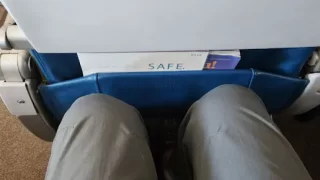
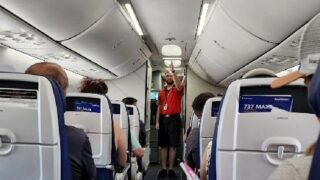

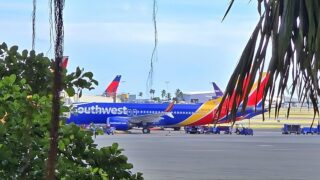
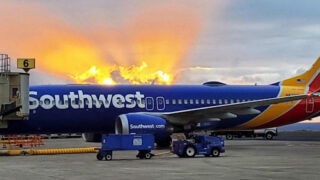
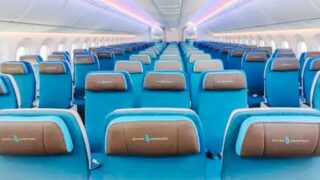
I am less likely to fly SWA if I have to pay even more. Add-ons that cost money don’t make me happy. Make seating comfortable and flying desirable without an additional cost.
southwest completely blew it. They should have retrofitted their planes with 3 to 6 or so two row seats and offered a business class section.
I have be a Flight Attendant for over 30 years. I can’t recall more than 3 customers ever who purchased that extra seat. Two of them were larger individuals of size. who need that extra seat. The other was a traveling nurse who was transporting medical organs for transplant and used the extra seat for medical organs securely strapped in. Each occasion the gate agent informed us of the extra seat use. It’ll b interesting if your coverage of this subject will increase the number I see on the flights I work.
I hope for the extra seat next to me. Sometimes I win. I won’t pay even more.
Make the seats comfortable for happier passengers.
Southwest Airlines Policy as per their website: Customers with disabilities who physically occupy the space of an extra seat in some way and would otherwise be unable to access our aircraft should proactively purchase the needed number of seats prior to travel to ensure the additional, adjacent seat is available.
Customers may not purchase more than one seat for the sole purpose of keeping the seat next to the Customer empty.
I was told that even buying two seats might not work. Since only one of those seats is actually filled, if the flight is overbooked, the airline can fill the empty seat with someone else a few minutes before the flight leaves. I’m not sure how this works though or if its accurate.
Interesting point. Hopefully the gate agent would ask for volunteers & of course offer some extra compensation for forfeiting the empty seat. Although I doubt they’d refund the value of that ticket. Worse case scenario they’d involuntarily cancel that reserved empty seat & refund the ticket. I would hope they would disclose in advance their policy in handling oversold flights relative to the purchased extra seat.